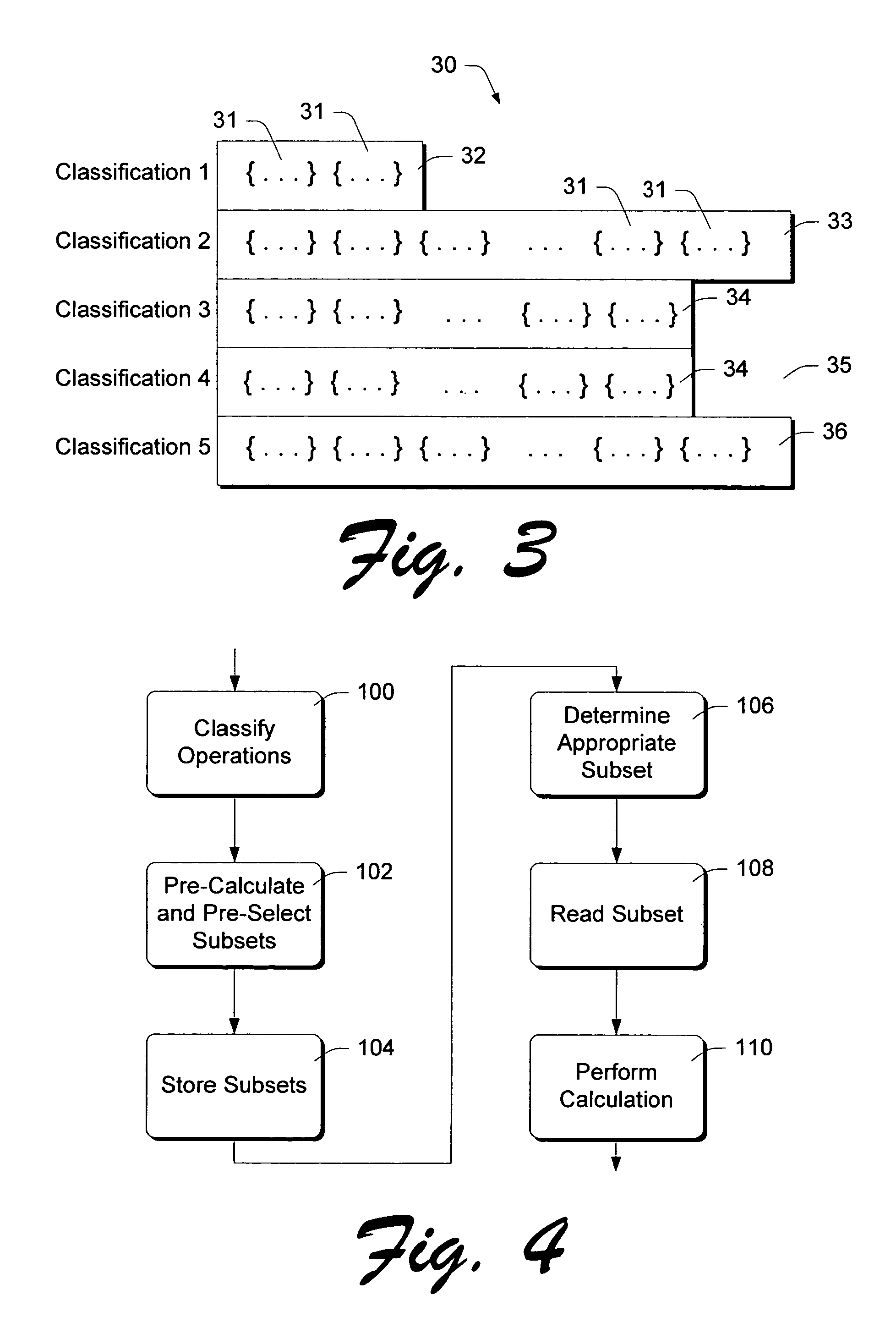Methods and systems of using result buffers in parity operations
a result buffer and parity operation technology, applied in the direction of instruments, coding, code conversion, etc., can solve the problems of doubling the cost of storing data, reducing the performance and availability characteristics of mirror methods, and reducing the efficiency of computations
- Summary
- Abstract
- Description
- Claims
- Application Information
AI Technical Summary
Benefits of technology
Problems solved by technology
Method used
Image
Examples
Embodiment Construction
Parity Operations
[0028]Referring to FIG. 2, a redundant data storage system 20 in accordance with the invention utilizes storage disks 22 with data stripes 24. Each data stripe 24 comprises a plurality of data segments x0 through xN−1 and at least two corresponding parity segments P and Q. P and Q are derived from the data segments x0 through xN−1, from a first set of parity coefficients p0 through pN−1, and from a second set of parity coefficients q0 through qN−1. The parity coefficients correspond to respective data segments in accordance with the equations below:
P=p0x0+p1x1+p2x2+pN−1xN−1
Q=q0x0+q1x1+q2x2+qN−1xN−1
[0029]In accordance with the invention, parity operations are generally classified as parity segment generation operations, parity segment regeneration operations, and data segment reconstruction operations.
[0030]A parity segment generation operation is performed when creating a new data stripe—the parity segments are created based on completely new data.
[0031]A parity seg...
PUM
 Login to View More
Login to View More Abstract
Description
Claims
Application Information
 Login to View More
Login to View More - R&D
- Intellectual Property
- Life Sciences
- Materials
- Tech Scout
- Unparalleled Data Quality
- Higher Quality Content
- 60% Fewer Hallucinations
Browse by: Latest US Patents, China's latest patents, Technical Efficacy Thesaurus, Application Domain, Technology Topic, Popular Technical Reports.
© 2025 PatSnap. All rights reserved.Legal|Privacy policy|Modern Slavery Act Transparency Statement|Sitemap|About US| Contact US: help@patsnap.com



